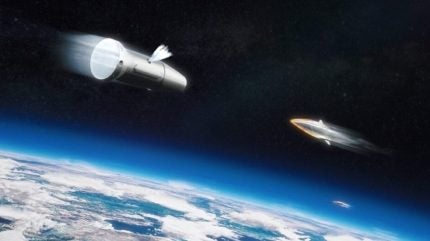
Europe’s Hypersonic Defence Interceptor (HYDEF) programme took another step forward on 27 August 2024, by achieving its Mission Definition Review (MDR), the second technical milestone toward developing an endo-atmospheric interceptor that can defend against hypersonic threats.
The Organisation for Joint Armament Co-operation (OCCAR) announced the completed MDR, concluding the Pre-Feasibility Phase of the HYDEF programme.
HYDEF, an initiative primarily driven by a €100m ($111m) investment from the European Defence Fund, aims to address hypersonic threats anticipated in the time frame after 2035. The primary goal of HYDEF is to create a highly agile interceptor system that can operate at various atmospheric levels, utilising advanced guidance and sensor technologies. Another €10m is contributed by member states Belgium, Germany, Norway, Poland and Spain.
The MDR focuses on the HYDEF mission and the concepts being developed to pursue the mission successfully. The review presented an evaluation of operational concepts, capabilities, and the expected performance of the proposed options. This included assessments of user and mission requirements, a threat analysis, identification of weapon and sensor systems, and a high-level system model.
The HYDEF Consortium, led by Spanish missile defence company SMS, unites 14 companies from seven European nations, all with extensive experience in air defense. The consortium includes SONACA (Belgium), LKE (Czech Republic), Diehl Defence (Germany), NAMMO (Norway), ILOT and ITWL (Poland), Beyond Gravity (Sweden) and several Spanish companies: SMS, EM&E, GMV, Instalaza, INTA, Navantia, and Sener.
Following the meeting in Rauoss, Norway, a full-scale test firing os a Ramjet was conducted at NAMMO’s test facility.

US Tariffs are shifting - will you react or anticipate?
Don’t let policy changes catch you off guard. Stay proactive with real-time data and expert analysis.
By GlobalDataHypersonic threat environment
Russia is pursuing two hypersonic weapons programmes, the Avangard and the 3M22 Tsirkon, according to a Congressional Research Service (CRS) report updated August 2024.
Avangard is a hypersonic glide vehicle launched from an intercontinental ballistic missile. The CRS cites reports that Avangard weapons are currently fly deployed on the SS-19 Stiletto ICBM, and that Russia has intention to launch the Avangard from the Sarmat ICBM. The CRS notes that the capability to launch from an ICBM effectively removes any limit for range from th Avangard hypersonic glider.
The Tsirkon is a hypersonic cruise missile with a maximum range of 625 miles, according to Russian news sources cited by the CSR, and can be fires from a range of platforms including submarines and vertical launch systems mounted on cruisers.
China has successfully tested the DF-17 medium range ballistic missile, specifically designed to launch hypersonic glide vehicles. China has also tested the DF-41 ICBM, identified in a US congressional commision report as able to carry a conventional or nuclear hypersonic glide vehicle.
As well as testing these two delivery systems, China has tested DF-ZF hypersonic glide vehicles at least nine times since 2014, demonstrating high manoeuvrability during flight and achieving ranges as far as 1,200 miles, noted the CSR.
Australian India, France, Germany, South Korea, North Korea and Japan are also developing hypersonic weapon technologies. Iran, Israel and Brazil are known to have conducted foundational research on hypersonic airflows, but are not thought to be developing their own hypersonic weapons capabilities currently.



